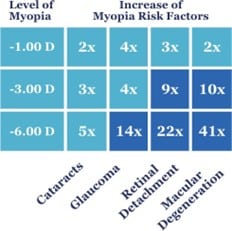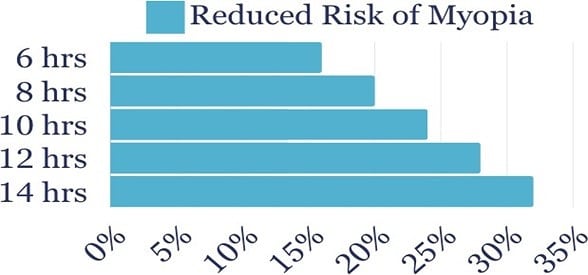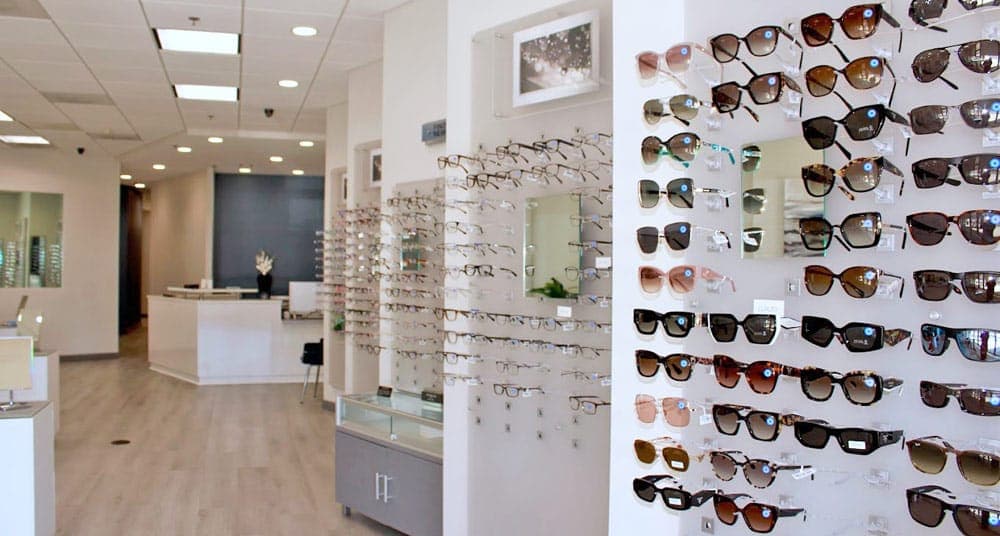Contents
Defining Myopia
Myopia refers to a condition where the shape of the eye becomes elongated, altering how light passes through and focuses on the retina. This results in nearsightedness, where objects up close appear clear but distant objects look blurry.
Myopia tends to progress rapidly in growing children, often slowing as they reach their late teens or early adulthood. Although current technology cannot reverse myopia, it can slow or even halt its progression. The cause is largely unknown, but hereditary, environmental, and behavioral factors all play a role.
Catching myopia and beginning management at a young age is crucial for preserving long-term vision health and reducing the risk of serious complications later in life.
Early Symptoms of Myopia to Watch For
Identifying myopia in children early is essential to minimizing its impact. Signs can appear at school and at home.
At school
The first sign may be difficulty seeing from the middle or back of the classroom. Watch for:
- Complaints about not seeing the board clearly or mentioning blurry distance vision.
- Loss of focus in class, behavior issues, or appearing easily distracted.
- Inconsistent performance in different classes, especially when sitting farther from the board.
After-school eye fatigue is another clue. Children may complain of tired eyes or frequent headaches, especially after a full day of schoolwork.
At home
At home, symptoms may be easier to observe, such as:
- Excessive blinking to see better at a distance.
- Frequent eye rubbing that suggests visual discomfort.
- Squinting to identify distant objects like signs or TV details.
- Sitting very close to the television or holding screens near the face.
If your child shows any of these signs, schedule an eye exam as soon as possible. Early intervention with myopia management and proper vision care can support healthy vision into adulthood.

The Growing Concern of Pediatric Myopia
Roughly 42% of children in the U.S. are currently myopic, and studies project that over 50% of the global population will be myopic by 2050. Pediatric myopia not only affects daily life but also increases the risk of serious eye conditions, including:
- Macular degeneration
- Retinal detachment
- Glaucoma
- Cataracts
If left unmanaged, these conditions can lead to partial or total loss of vision. Addressing myopia early is crucial for preventing these outcomes. No amount of myopia is considered completely safe.

Harm Reduction Strategies for Myopia
While our understanding of myopia's causes is still evolving, we know that certain behaviors can influence its progression. Two key categories are near activities and far activities.
Near activities
Near activities require the eyes to focus on objects within arm's reach or closer and are linked to myopia progression. Examples include:
- Using phones, tablets, or computers
- Reading books or e-readers
- Writing, drawing, or other close-up tasks
Far activities
Far activities involve focusing on objects 20 feet or more away. They cannot fully prevent myopia, but they support healthier eye development. Examples include:
- Playing outdoor sports
- Hiking, biking, or going on family walks
- Leisure activities like flying kites or birdwatching
By balancing near and far activities and prioritizing outdoor play, families can help reduce the risk of myopia progression and support better overall eye health.
What Is Myopia Management?
The goal of myopia management is to slow or even halt the progression of myopia, especially during childhood and adolescence when the eyes are still developing. Effective management encourages the eye to grow in a more optimal shape and helps prevent worsening vision.
Several evidence-based treatment options are available, including:
- Ortho-K (orthokeratology): Nighttime contact lenses that gently reshape the cornea while you sleep, temporarily correcting vision for the following day.
- Myopia control contact lenses: Specialized daytime lenses designed to slow myopia progression.
- Prescription eye drops: Medication that can be used alone or alongside other treatments to manage myopia.
At Beyond Eyecare, Dr. Khaldieh works with each family to determine the most suitable options and build a myopia management plan tailored to your child's needs.

Conclusion
Understanding and managing myopia is essential for long-term eye health. With myopia rates on the rise, early detection and intervention are more important than ever. Regular eye exams and proactive care can significantly reduce the risk of severe vision issues later in life.
If you've noticed any signs of myopia in your child, or if it's time for a routine eye check-up, do not delay. Schedule an appointment with Beyond Eyecare to begin effective myopia management and safeguard your child's vision.
Sources:
- https://www.ncbi.nlm.nih.gov/pmc/articles/PMC7401976/
- https://www.ncbi.nlm.nih.gov/pmc/articles/PMC6120514/
- https://www.ncbi.nlm.nih.gov/pmc/articles/PMC5599950/




